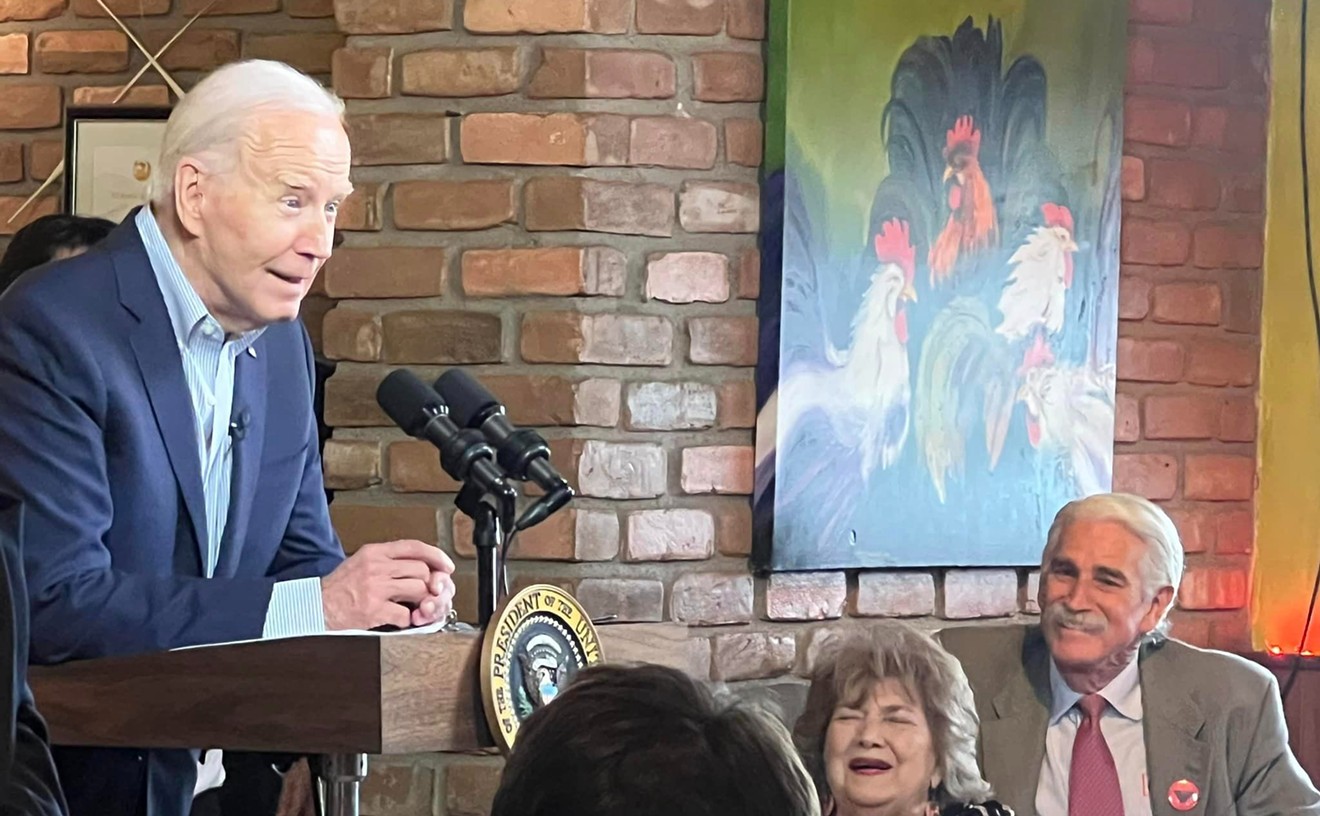The "senior exit guide" who helped a Phoenix woman commit suicide testified that it took the woman about eight minutes to become unconscious after pulling a plastic hood over her own head and inhaling helium.
Wye Hale-Rowe, a retired family therapist in her early 80s, testified for the prosecution at the assisted-suicide trials of two other members of the controversial right-to-die Final Exit Network.
Her testimony came as a part of a plea deal she struck with the Maricopa County Attorney's Office, in which she pleaded guilty to a lesser charge of "facilitation to commit manslaughter."
Hale-Rowe said she "directed" the suicide of 58-year-old Jana Van Voorhis, a mentally troubled woman who wasn't suffering from a terminal physical illness -- usually the stock-in-trade of the right-to-die crowd.
Hale-Rowe said she flew in from Colorado, met local "exit guide" and current co-defendant Frank Langsner, and the pair immediately went to Van Voorhis' home, where (in their second visit on April 12, 2007) they assisted in the woman's suicide.
Retired college professor Langsner is charged with manslaughter (assisted suicide) and conspiring to commit manslaughter, and Final Exit medical director Dr. Larry Egbert is charged with conspiracy to commit manslaughter in the jury trial, ongoing in the county courtroom of Judge Paul McMurdie.
Here is our original story on this fascinating case, getting covered gavel to gavel by PBS' Frontline for a future story.
Hale-Rowe seemed almost chipper on the witness stand, smiling often and seeming as if she ought to be sitting in the crowded spectator's gallery with other members of the Final Exit Network who have been in attendance from the start.
She told jurors that she still is a member of the Final Exit Network, a Georgia-based offshoot of the now-defunct Hemlock Society.
Hale-Rowe said Van Voorhis repeatedly told her and Langsner on that April day that she was ready to die, and that she didn't want her sister, Viki, or other family members to know it was suicide.
Per previous instructions from the Final Exit Network (which Van Voorhis had joined as a dues-paying member some weeks earlier), the Phoenix woman secured two helium tanks, plastic tubing, and a "regulation" hood to put over her head.
When the time came on the evening of April 12 (four years and one day before her testimony), Hale-Rowe told the court that she talked Van Voorhis through the machinations of the suicide as the woman positioned herself in a semi-reclining position on her bed.
Prosecutor Patrick Johnson asked Hale-Rowe if she recalled what defendant Langsner was doing at the time.
"I hope he was holding her hand," she replied. "Dying is a lonely business, and I like to have people have some human contact as they go to sleep."
But for unknown reasons, Hale-Rowe said, it took Van Voorhis about eight minutes to slip into unconsciousness from the time the woman placed the hood snugly over her head to impede the flow of oxygen.
"It took her longer than some others," she testified, referring to other so-called "death events" she has taken part in.
Hale-Rowe said she and Langsner tried to make it appear as if Van Voorhis had died naturally before they left the home (with the helium tanks and the other evidence in tow), to "protect her privacy and dignity, and her family."
Jurors certainly had to be wondering why Hale-Rowe wasn't sitting at the defense table with the two remaining defendants, especially as she described her primary role in "directing" the actual suicide.
But rulings by Judge McMurdie are keeping prosecutors from mentioning that Hale-Rowe and onetime co-defendant Roberta Massey -- the former national case coordinator for Final Exit, who also plea bargained and testified earlier at this trial -- never were charged in the case.
The jurors also are barred from hearing about Van Voorhis' deeply troubled mental state at the time of her death or that she wasn't suffering from a terminal illness.
We are most curious as to how the judge will instruct the jurors on how Arizona law defines assisting or aiding a suicide.
If he decides that the definition is to include providing advice on how to do yourself in, prosecutors still may have a chance at a conviction.
If not, this case -- with all of its moral and ethical potholes and dilemmas -- seems like a very difficult one for a unanimous verdict of guilt.
Hale-Rowe's testimony continues this morning, with her cross-examination on the horizon.










